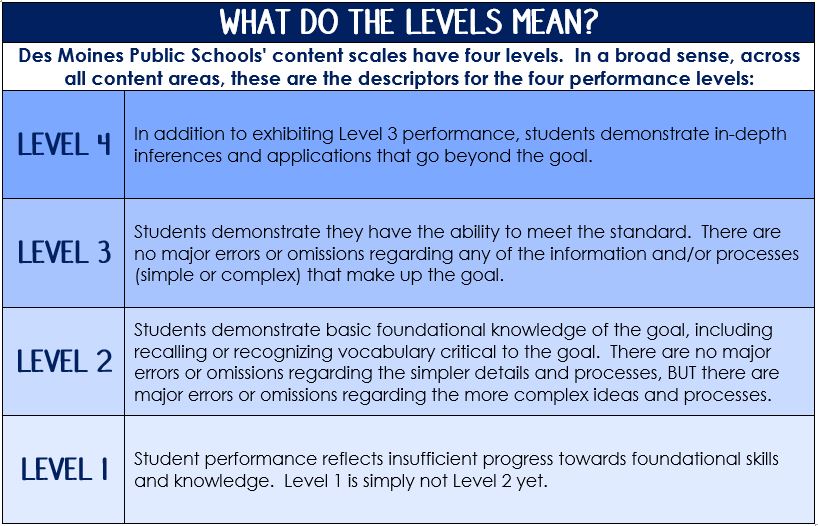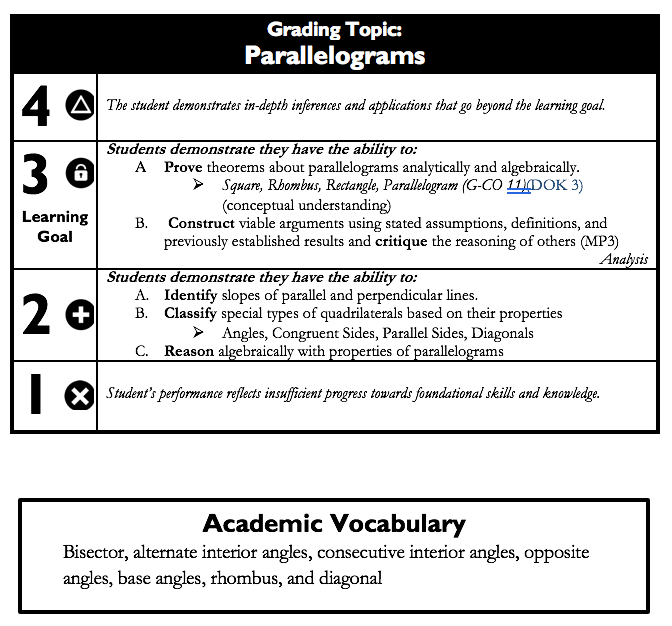Click on a school level below to see one content scale sample in math and another in English Language Arts.
|
In the Des Moines Public Schools standards-referenced grading framework, topic scales are tables that hold four performance levels. The performance levels describe "how good is good enough" for a student to show understanding of meeting a standard or goal. Level 3 represents meeting the standard or meeting the goal at grade level. (Standard is the same as learning goal. Topic scale is synonymous with content scale, proficiency scale, and simply the word "topic.")
First, these topic scales are created by district educator leadership teams at the secondary level. The scales connect directly to specific topics determined by looking carefully at the Iowa Core and national standards. Teachers first ensure they understand the scales, then they show the scales to students and engage students in understanding the scales, ensuring they understand what's expected for the different levels. Both teachers and students refer to the scales when learning is going on in the classroom. Teachers know that to leverage classroom learning time, it is often best to start instruction and assessing student learning at Level 3 (proficiency), while sometimes dipping down into a Level 2 learning target, in order to scaffold learning and ensure all students meet the learning goal(s) at Level 3. Level 4 is encouraged in order to extend learning for those students who reach proficiency at Level 3 quickly. |
Next, tasks, assignments, and common assessments are created by looking at these topic scales and determining questions or prompts for evidence that are directly related to learning targets, within a level, in the scale. (Learning targets are those statements within a level that start with letters A, B, C, etc.) Then, after practicing and working to understand the topics and connected concepts and skills, students are offered different opportunities to give evidence to show that understanding. Teachers assess the evidence against the scale. Regularly, two or several teachers collaborate to analyze the same piece(s) of student work to see if they have common understanding of student work against the learning targets in the scale. The classroom teacher gains insights into feedback to give students to help them know what to do next. Then, the feedback provided by the teacher and the topic scales allows students opportunities to relearn, offer more evidence, or move ahead in learning. Students might also give evidence of learning in ways other than the common "paper/pencil" assessments or tasks described above, such as through a performance, a product, or even a conversation with the teacher. Such student evidence would still be assessed against the topic scales.







